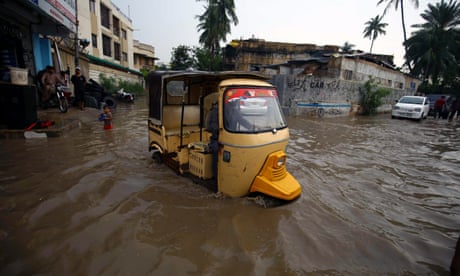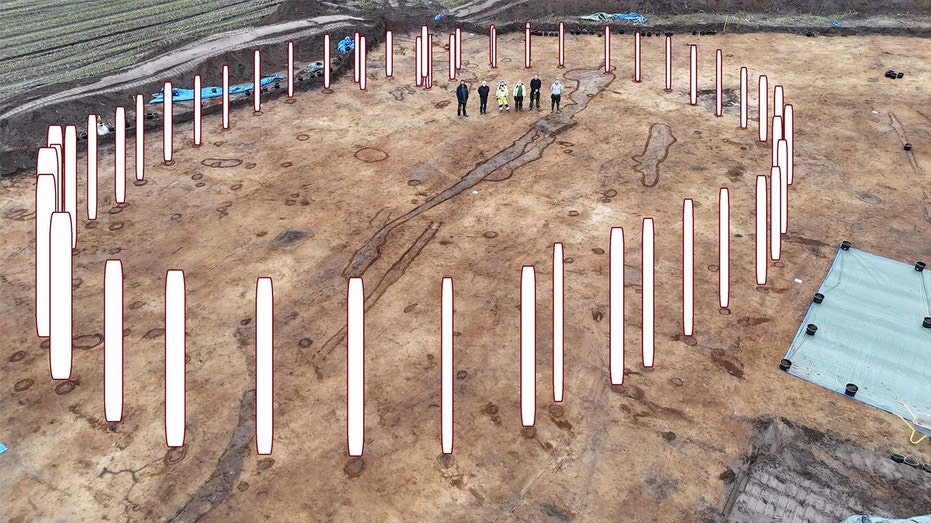- by foxnews
- 10 Mar 2025
Pakistan floods ‘made up to 50% worse by global heating’
Pakistan floods ‘made up to 50% worse by global heating’
- by theguardian
- 16 Sep 2022
- in news

The intense rainfall that has caused devastating floods across Pakistan was made worse by global heating, which has also made future floods more likely, scientists have found.
Climate change could have increased the most intense rainfall over a short period in the worst affected areas by about 50%, according to a study by an international team of climate scientists.
The floods were a one in 100-year event, but similar events are likely to become more frequent in future as global temperatures continue to rise, the scientists said.
The scientists were not able to quantify exactly how much more likely the flooding was made by the climate crisis, because of the high degree of natural variability in the monsoon in the region. However, they said there was a 1% chance of such heavy rainfall happening each year, and an event such as this summer's flooding would probably have been much less likely in a world without human-induced greenhouse gas emissions.
Friederike Otto, senior lecturer at the Grantham Institute for climate change and the environment at Imperial College London, said that the "fingerprints" of global heating could be clearly seen in the Pakistan floods, which were in line with what climate scientists had predicted for extreme weather.
"We can say with high confidence that [the rainfall] would have been less likely to occur without climate change," she said. "The intensity of the rainfall has increased quite a bit." Historical records had shown heavy rainfall increasing dramatically in the region since humanity had started pouring greenhouse gases into the atmosphere, the scientists found.
Otto added: "Our evidence suggests that climate change played an important role in the event, although our analysis doesn't allow us to quantify how big the role was. This is because it is a region with very different weather from one year to another, which makes it hard to see long-term changes in observed data and climate models."
About a third of Pakistan has been affected by the flooding, with water covering more than a tenth of the country after more than three times the average rain fell in August. Nearly 1,500 people have died and 33 million people have been affected, with 1.7m homes destroyed.
For the country as a whole it was the wettest August since 1961, and for the two southern provinces of Sindh and Balochistan the wettest on record, with about seven to eight times as much rain as usual.
While the increased rainfall was influenced by the changes to the climate, local factors also played a role in the flooding and its impacts. For instance, forests in the region have been cut down over many decades, and mangrove swamps removed, while human-made dams, irrigation and other changes to the watercourses have also had an impact on natural flood patterns. Poor infrastructure, such as homes flimsily built in places prone to flooding, has also meant more people suffering as a result of the floods.
Ayesha Siddiqi, assistant professor at the department of geography at Cambridge University, said: "[Flooding] has hit places where local socio-ecological systems were already pretty compromised. This disaster was the result of vulnerability constructed over a number of years, and should not be seen as an outcome of one single event."
Pakistan faces a cost of at least $30bn in damages, with the loss of food crops alone coming to about $2.3bn, a particularly heavy burden at a time of rising food prices around the world. About 18,000 sq km of cropland have been ruined, including about 45% of the cotton crop, one of Pakistan's key exports, and about 750,000 livestock have been killed.
The report on the Pakistan floods came from World Weather Attribution, a grouping of scientists from around the world who try to discern the influence of human-caused climate change on extreme weather events. They analyse such events in real time to produce quick responses on whether climate change has influenced extreme weather, a process that used to take years.
Previous studies have found that climate change exacerbated the heatwaves in India, Pakistan and the UK earlier this year, and floods in Brazil. WWA found last year that the heatwave in the Pacific north-west region of the US would have been "virtually impossible" without climate change.
A recent analysis by the Guardian revealed the extent to which the climate crisis is "supercharging" weather events, with devastating consequences.
Otto said that countries meeting this November for the Cop27 UN climate conference in Egypt should take note of the extreme weather the world has seen this year and in recent years. "The lesson is that this will become more likely, probably a lot more likely. Becoming more resilient is very important."
- by foxnews
- descember 09, 2016
Ancient structure used for cult 'rituals' discovered by archaeologists
A Neolithic Timber Circle was discovered by archeologists in Denmark resembling the historical landmark Stonehenge in the U.K. It is open to be viewed by the public.
read more


